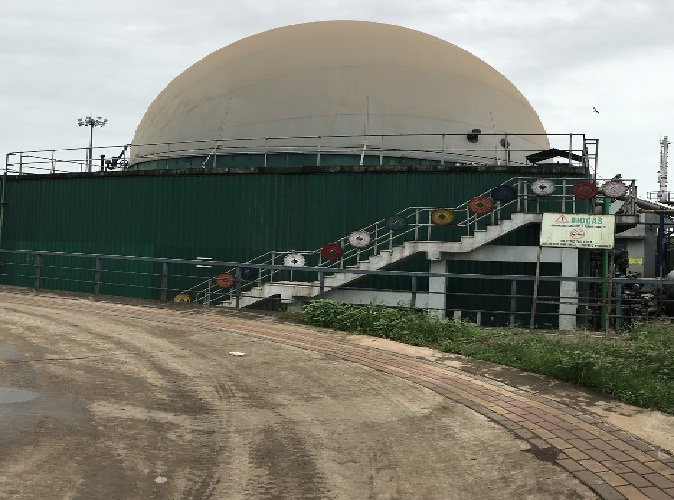The SWMF at Saligao serves as a best practice model for treating waste generated in a holistic manner while incorporating the needs of all stakeholders associated with waste management – village panchayats, informal sector and its employees

Since its inception in 2016, the plant has received more than 1.6 lakh MT of waste, out of which 32% is dry waste, 45% organic waste,and 23% is mixed. About 99% of this waste is processed. If all this waste was dumped into a landfill, it would have covered an area equivalent to 3 football fields!
According to GHG Platform India’s time series data (2005 - 2015), the waste sector contributes to 5% of India’s total GHG emissions. This conservative estimate is only from waste disposed at landfills and does not account for mismanaged waste that is littered, burnt or dumped. Traditionally management of MSW is responsibility of municipalities and urban local bodies (ULBs) that are limited– technically, financially and operationally to function effectively. ULBs either require support from specialised organisations (private or public) to fulfil their waste management tasks or take it up on their own. In India, by and large these are the two approaches adopted by the cities to manage waste.
Goa, however, has adopted a third approach – to create its own specialised vehicle to oversee waste management at the state level and make it accountable to the highest level of the administrative hierarchy in the state – the Chief Minister.
Goa Waste Management Corporation or GWMC is a Special Purpose Vehicle set up to overlook all matters related to SWM in the state. A major achievement is the establishment and management of the integrated solid waste management facility (SWMF) at Saligao since 2016 where only residual waste ends up in the sanitary landfill. The state-of-the-art facility is retrofitted onto a remediated old legacy waste dumpsite.
Currently, the facility manages 125 TPD of waste as per SWM Rules 2016 with Hindustan Waste Treatment Pvt Ltd. For maximum resource and energy recovery, the SWMF has a material recovery facility for sorting and recycling dry waste, a waste-to-energy facility converting organic fraction into biogas and electricity, generating sufficient energy to power the plant; an in-vessel composting facility; and safe handling of residual, inert material. The plant recycles its effluents with a net zero liquid discharge. The residual inert material that goes to the sanitary landfill is approximately 3 per cent although 10 per cent was allowed under the concession agreement.
Cumulatively, through its activities over four years - recycling, substituting coal with RDF, and managing waste with anaerobic digestion, plant has reduced about 35,000 million tCO2-eq. emissions.Further, the Salmona spring which was earlier polluted, has since improved its water quality due to scientific management of waste at the facility.GWMC also provides technical support to various ULBs and panchayats.
The Saligao planthoweverhas to overcome some challenges. The facility is expensive and has high operational and maintenance costs. A sustained source of funding is needed to ensure smooth functioning overtime.As of now the facility caters to only waste generated in 27 villages in North Goa. But one facility is not enough for the entire state’s SWM. Also, having a government-owned SPV does not indicate that local bodies are free of their waste management responsibilities. It’s a co-operation model.
The onus of source segregation and collection lies on waste generators and its enforcement on ULBs/ panchayats. If local bodies don’t have collection systems, littering and leakages into water bodies can be high. Tourist spots generate more waste however and there is institutional pressure to keep these places clean. Not all panchayatshave been able to enforce segregation strictly; also there is resistance from villagers who don't pay for waste collection services. In some villages, open burning or dumping in nearby drains is common practice.
The GWMC model showcases that a SPV with ownership at the highest level of administration can turn things around for waste management especially if those at the helm of affairs are technically qualified, trained, motivated and dedicated. It can build technical capacities and improve the socio-economic status of the informal sector working in the waste sector. However, the success of waste management lies in a co-operative and participatory approach. It applies to any GWMC like model. Hence, active participation of citizens, ULBs, VPs and all other stakeholders in waste management is a must to achieve a sustainable waste management ecosystem in Goa.
*Kaur is research associate, Environment and Waste Management, TERI; Kazi is fellow, Environment Education and Awareness Area, TERI. ** The article has inputs from VaibhavRathi, technical advisor-Climate Change, GIZ. Views expressed are personal.